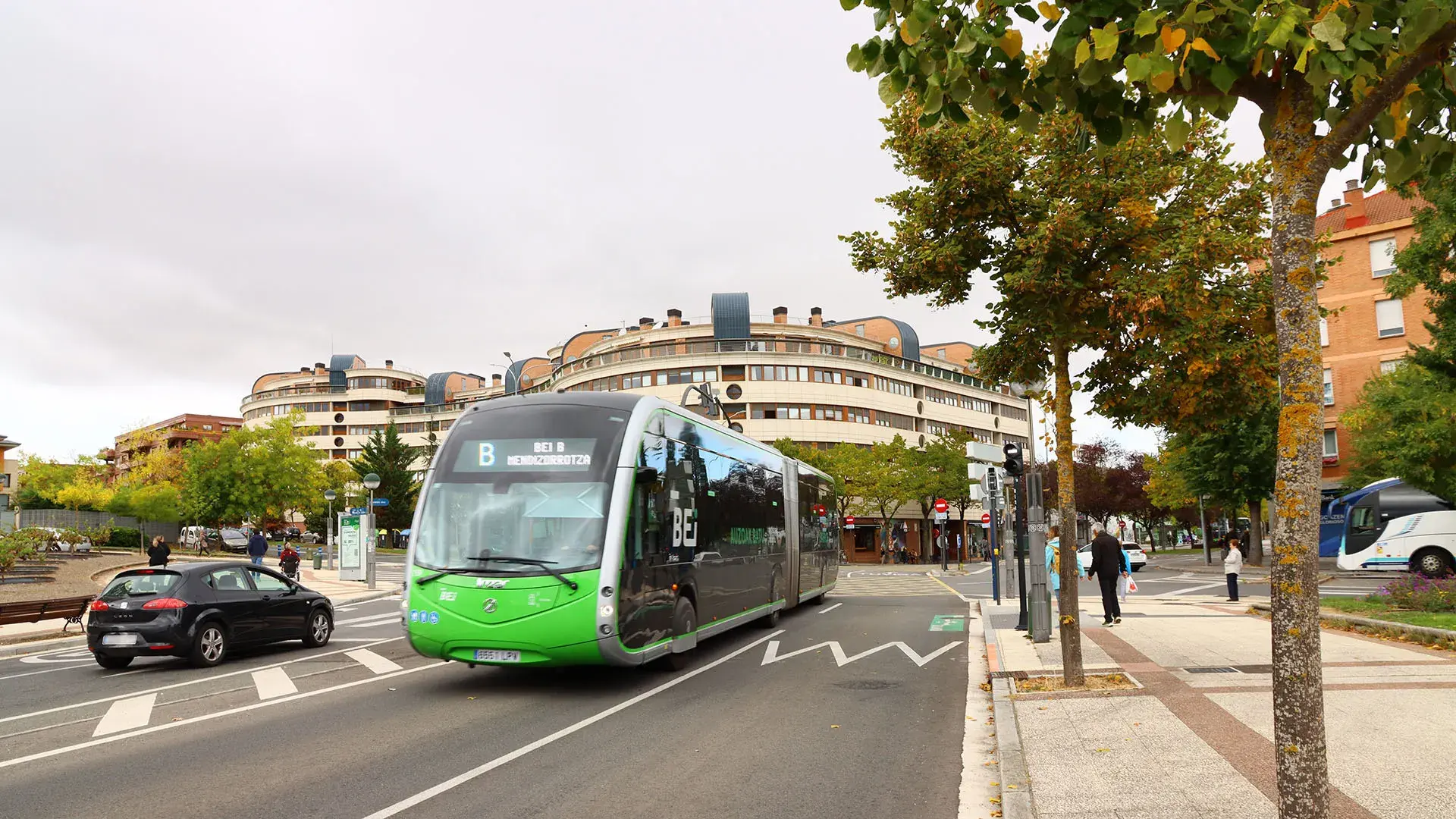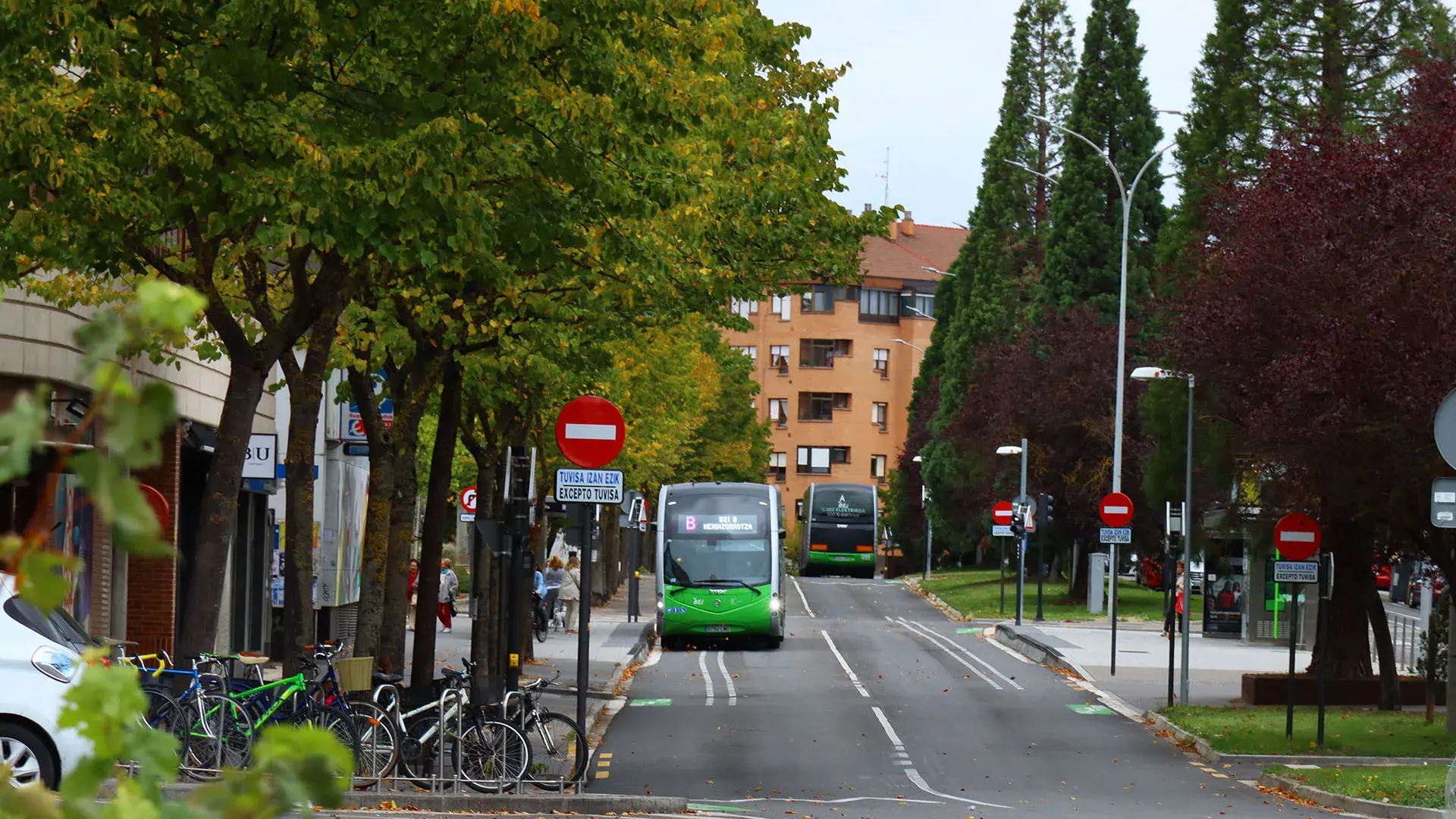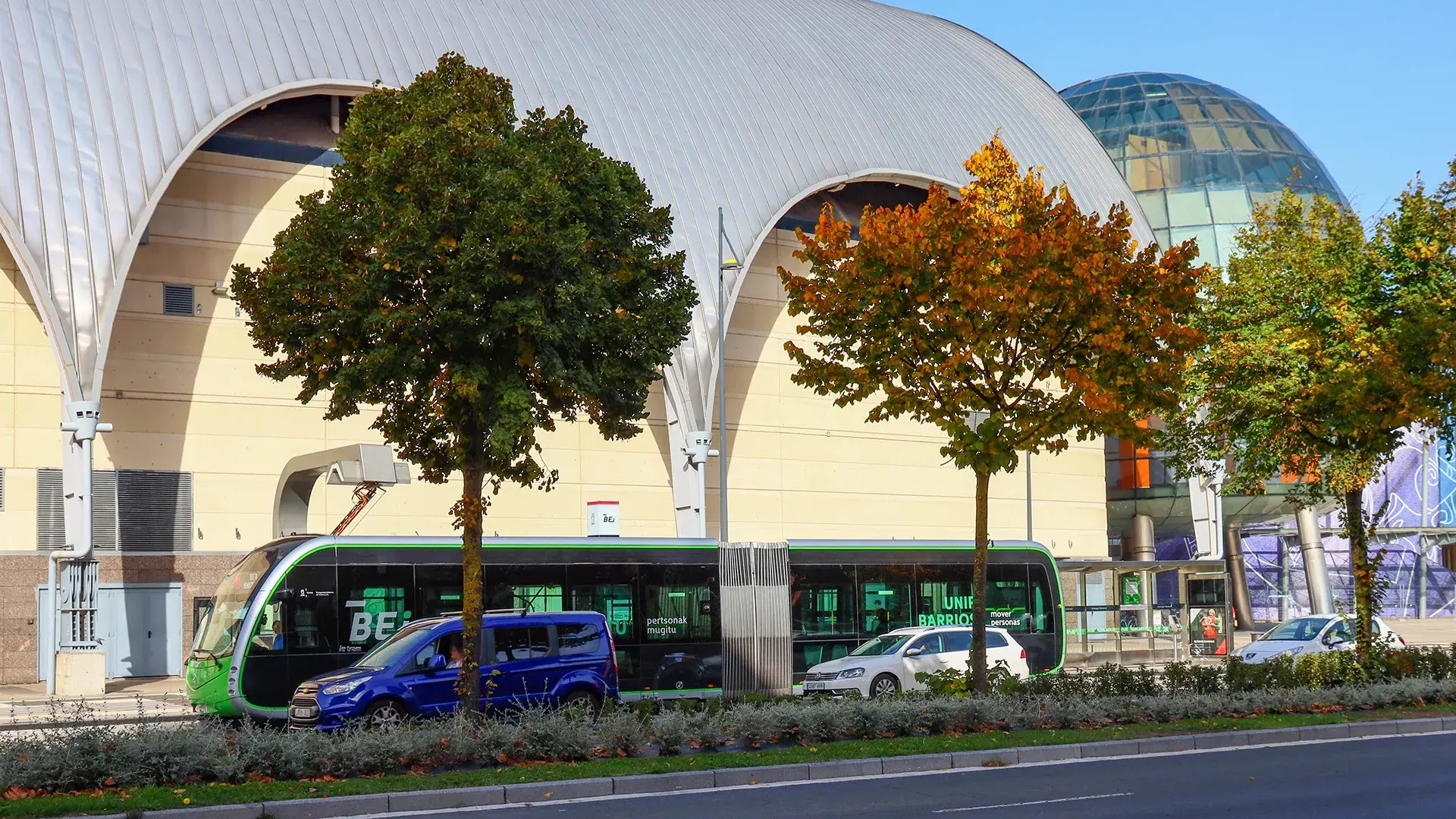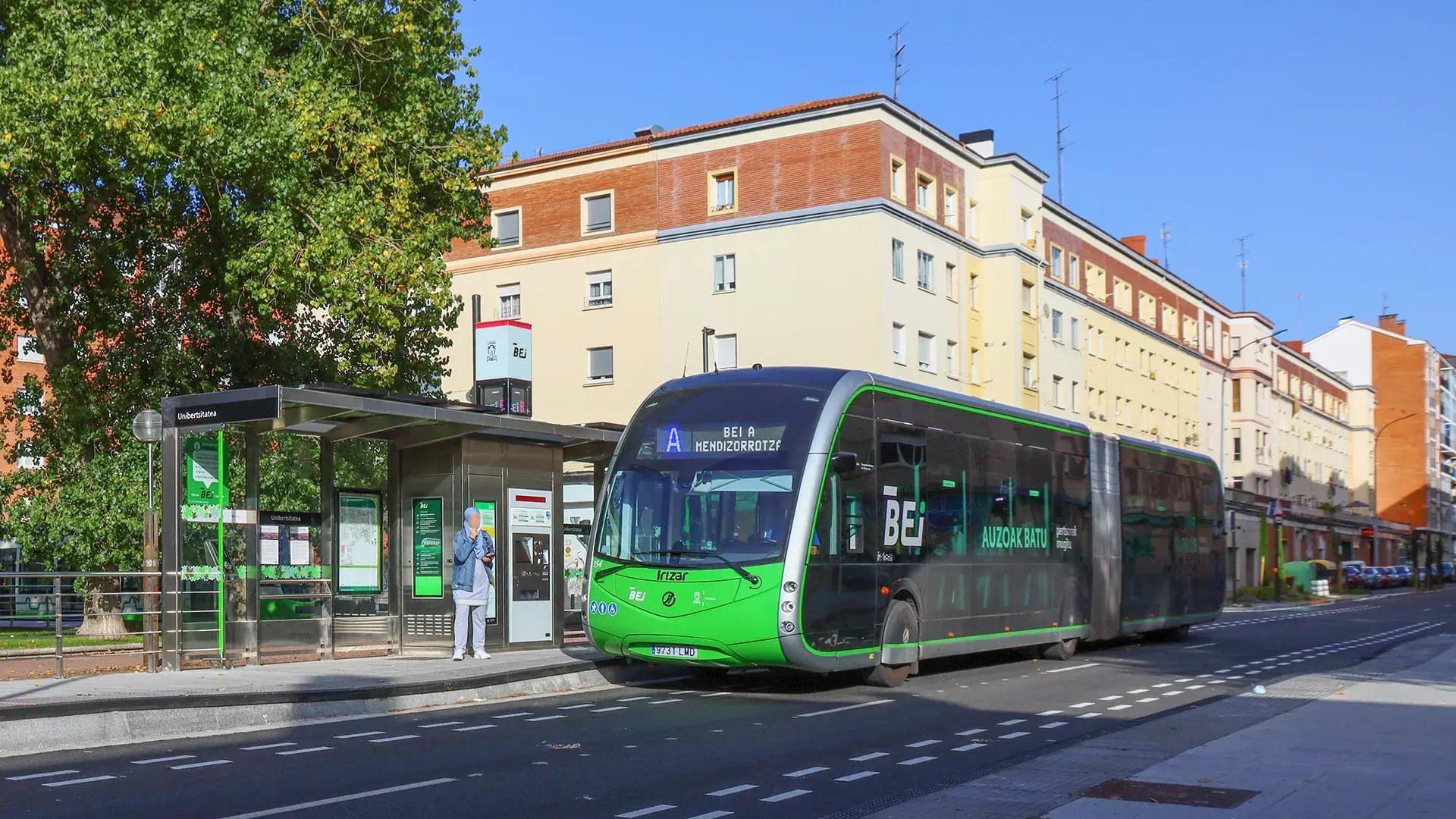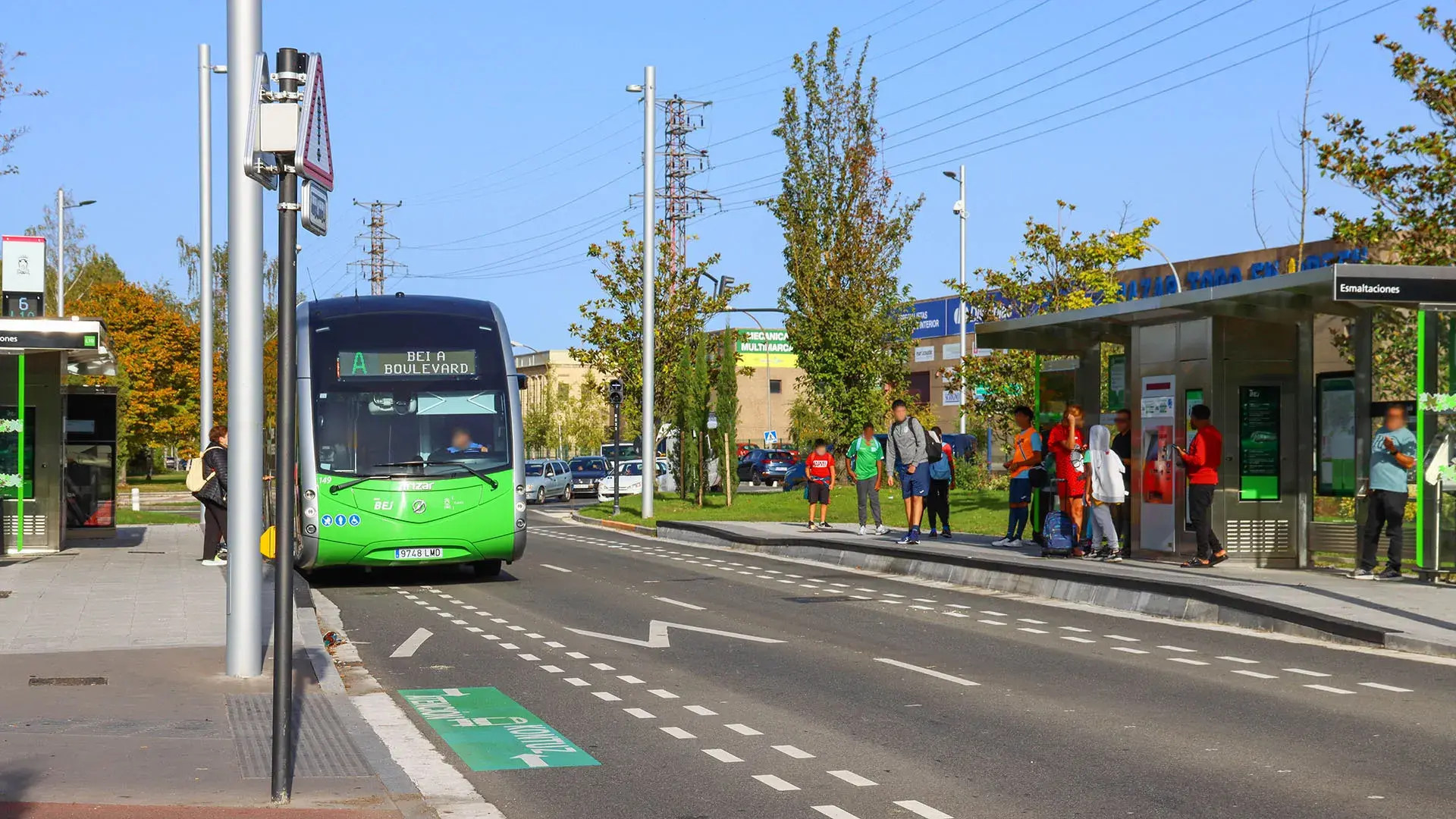With the works and testing period completed, the city's new transport system is now fully operational. KREAN implemented the urban development and bus stop projects. Subsequently, it was part of the UTE IEB 0 EMISSIONS, awarded the contract for the "Project, Infrastructures, Supply, Commissioning and Maintenance of an Intelligent Electric Bus (IEB) system in Vitoria-Gasteiz"..
The work of KREAN consisted of implementing the construction project (including urban development, bus stops, electrical connections, telecommunications, traffic lights, ticket sales and cancellation and vehicle supply), acting as the technical office during the works and preparing the completion of works project. KREAN was also responsible for the design, construction, supply and assembly of the bus stop shelters.
The partners in the UTE IEB 0 EMISSIONS were YARRITU, which was responsible for the execution of the works, and IRIZAR E-MOBILITY, which manufactured and supplied the electric buses and will be responsible for their maintenance for a period of 15 years.
The Vitoria Intelligent Electric Bus consists of the implementation of a BRT (Bus Rapid Transit) line on peripheral line 2 of the bus network operated by TUVISA in Vitoria. This line is strategic as it links key points in the city such as the Txagorritxu Hospital, the University, the Mendizorrotza Sports Facilities, the Boulevard Shopping Centre, the Bus Station and the Basque Government.
It is a transport system based on a "tram-like" electric bus, with the characteristics and advantages of a tramway, such as reserved and exclusive lane, traffic-light priority, stops with universal accessibility and level access to the bus, ticket issuing and cancellation at the stop, passenger information system and operating help system.
The line is 10.3 km long and 23 stops have been installed for each of the two directions of traffic. The stops have stainless steel and laminated and tempered glass shelters, photovoltaic panels on the roof, a technical block (with ticket dispenser and information panel), a Minutran block (which indicates the waiting time and identifies the service and the line), ticket cancellation, advertising OPI with information screen and signage and graphics.
The buses are 100% electric, 18-metre articulated buses (100 passengers) and 12-metre regular buses (65 passengers). They have three LED information screens, USB chargers, automatic guide system and driver assistance at stops.
Buses are charged in "slow" mode in depots at night and in "fast" mode by means of a pantograph installed on the bus roof that connects to a pole with a cantilevered arm where charging takes place.

